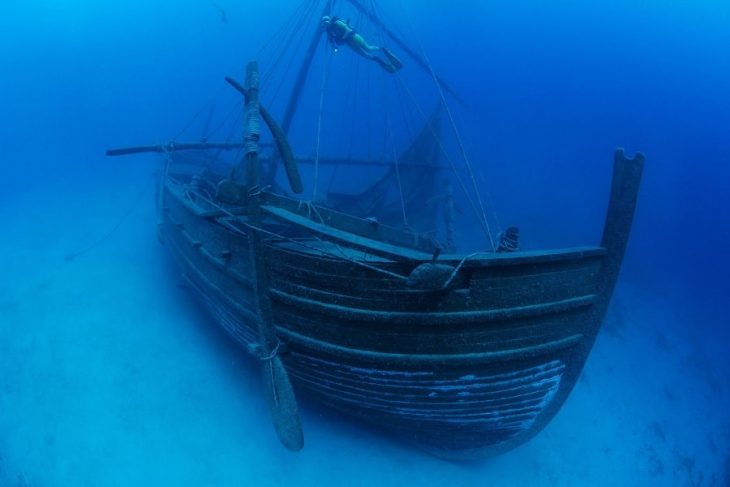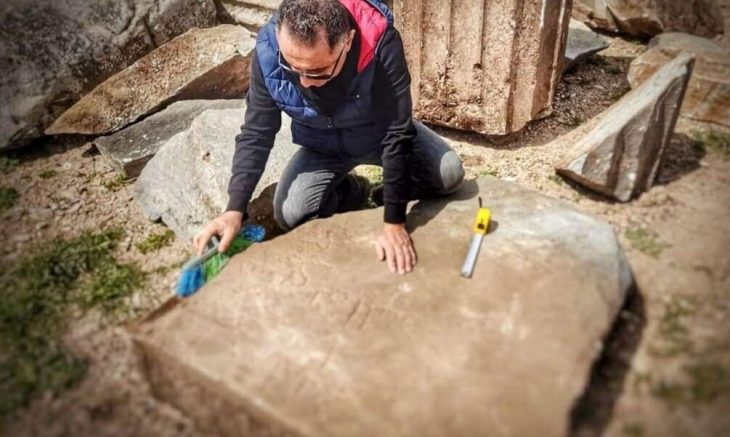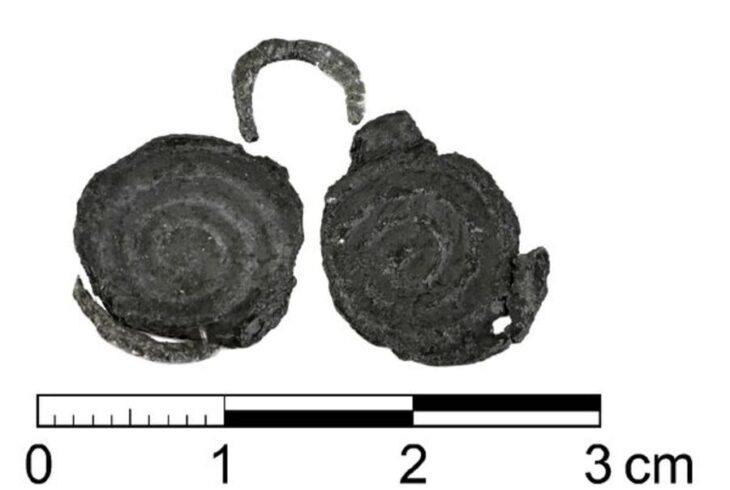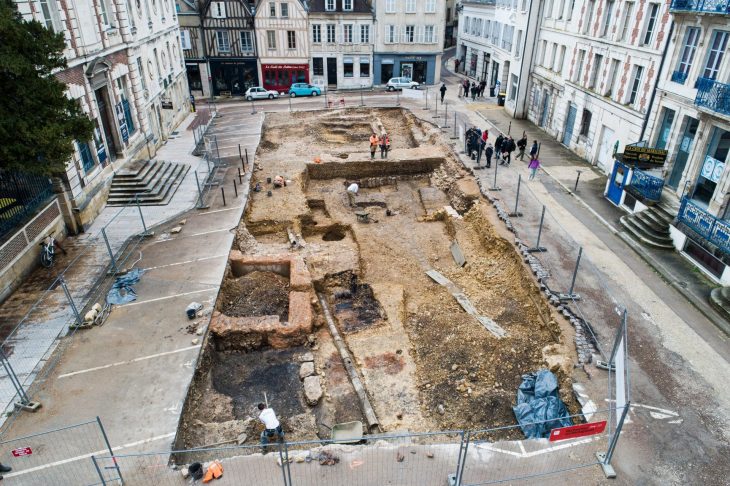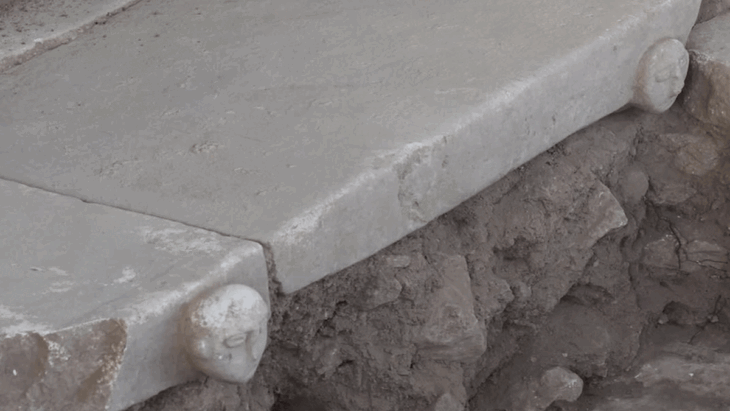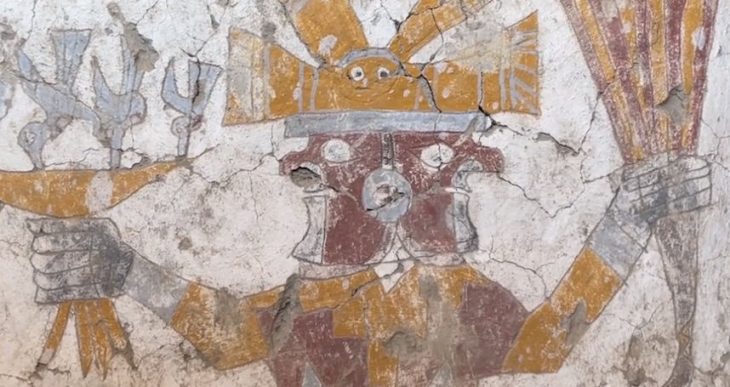New excavations by archaeologists from the Austrian Academy of Sciences and the Greek Ministry of Culture in Kleidi-Samikon in the western Peloponnese revealed that the temple discovered in 2022 was more monumental than previously assumed.
After more than a century of intensive searching, archaeologists have discovered the sanctuary of Poseidon of Samikon on the west coast of the Peloponnese and excavated a large temple there. A team of Austrian and Greek archaeologists, supported by geophysicists from Kiel and geoarchaeologists from Mainz, unearthed the foundation walls of the impressive building back in 2021.
It is located on the site where the ancient historian Strabo locates the famous sanctuary of Poseidon in his 8th book. This was the religious and ethnic center of the important confederation of Triphylian cities. Researchers with the participation of the Austrian Academy of Sciences (ÖAW) have now uncovered the entire length of the building and also made news discoveries.
The 28-metre-long and almost 9.5-metre-wide temple is divided into two large rooms, each divided by central inner pillars and a vestibule with two columns.

The function of the two rooms is still unclear. Perhaps it was a double temple, in which two deities were worshipped, or it is two rooms one behind the other, one of which could have served as a meeting place for the amphictyony of the cities of the Triphylian region. This was a loose association of cities on a religious-cultural basis in order to protect and administer a sanctuary.
📣 Our WhatsApp channel is now LIVE! Stay up-to-date with the latest news and updates, just click here to follow us on WhatsApp and never miss a thing!!
‘According to current knowledge, it is an archaic double temple that probably dates back to the 6th century BC. The roof was dismantled around 300 BC and deposited inside the building,’ explains Birgitta Eder, a researcher at the Austrian Archaeological Institute of the Austrian Academy of Sciences, who also heads the branch office in Athens.
Erofili-Iris Kolia, director of the Euphoria of Elis: “In the second half of the 4th or first half of the 3rd century BC, the Archaic temple from the 6th century BC was remodelled. In the process, the old roof tiles were evenly applied as a subfloor for the new floor. They served as insulation against groundwater and to stabilise the floor. Something that still works today. In those places where tiles are missing, the ground is damp and muddy.” These dates correspond to the finds of pottery, which can be assigned to the Archaic and Late Classical to Early Hellenistic periods.
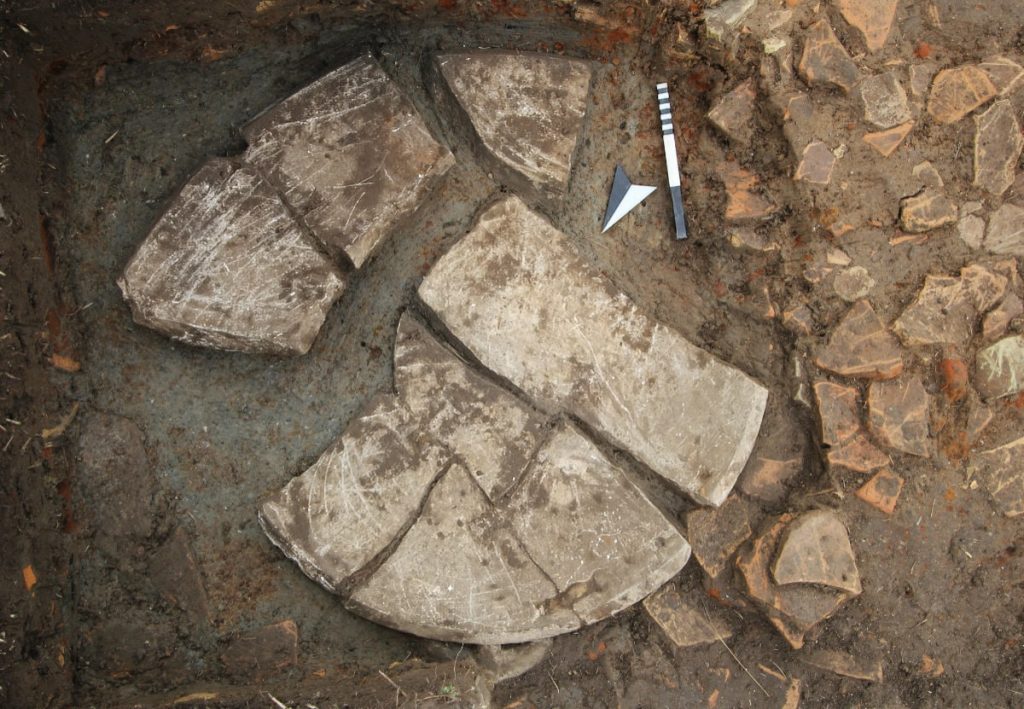
Marble basin and bronze plaque discovered
The archaeologists also discovered fragments of an impressive archaic marble basin with a diameter of around one metre, a so-called perirrhanterion. This ritual purification vessel imitates a bronze bowl and features ancient repairs with iron clamps. Together with a component discovered in 2022, it can be almost completely reconstructed.
Also noteworthy is the discovery of a large bronze plaque that was originally attached to one of the temple’s mud-brick walls. Due to its fragile condition, the plaque was recovered in a block. ‘Initial X-ray images show parts of an extensive inscription, but it will only be fully legible after extensive restoration,’ explains archaeologist Eder.
The reading of this inscription could provide further valuable insights into the history and use of the sanctuary, which was a place of communication in the ancient region.

Walls from another time
When the area north of the temple was cleared of dense vegetation, the course of a mighty double-shell wall was also documented. This wall, which possibly marks the sacred area of Poseidon, was first mentioned by the German Wilhelm Dörpfeld (1853–1940) at the beginning of the 20th century. It probably served as protection from the lagoons that were nearby at the time.
The archaeological research is funded by the Gerda Henkel Foundation and the Austrian Archaeological Institute of the Austrian Academy of Sciences. It takes place in close cooperation between the Greek Ministry of Culture and the Athens branch of the Austrian Archaeological Institute.
Cover Image Credit: Drone photo of the 2023 excavation in the Sanctuary of Poseidon of Kleidi-Samikon. ÖAW-ÖAI/Marie Kräker


